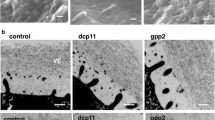Abstract
Objective: Our goal was to study the influence of solubilized human zonae pellucidae on zona binding potential and acrosome reaction.
Materials and Methods: Zona pellucida (ZP) solutions were prepared by dissolving zona in acidic buffer, NaH2PO4 (pH 2.5), to obtain 0.1 and 0.5 zona pellucida/µl. Zona binding capacity was evaluated by the addition of oocytes (10-fold) to sperm/zona pellucida solution droplets. The number of sperm bound to each oocyte was recorded. Zona pellucida-mediated acrosome activity was evaluated after 60 min of coincubation of sperm and 0.5 ZP/µl.
Results: The mean (±SE) number of sperm bound for control, 0.1 ZP/µl, and 0.5 ZP/µl was 181.2±12, 79.6±5, and 38.8±3, respectively. Zona pellucida-exposed sperm populations showed significant more acrosome-reacted sperm compared to control sperm, namely, 78 versus 32%, respectively (P=0.001).
Conclusions: The observed zona binding inhibition might be ascribed to zona receptor blocking on the sperm surface or the inability of acrosome-reacted sperm to bind to the zona pellucida.
Similar content being viewed by others
References
Barret CB, Harris D, Powers RD: Insemination in micro-drops under oil yields a higher fertilization rate than insemination in culture tubes. Book of Abstracts of the Fiftieth Annual meeting of the American Fertility Society, November 5–10, 1995, San Antonio, Tx, Poster 103, 134
Cunningham KJ, McCarthy CB, Russell JB: The pH change in a microdroplet system under oil with different numbers of sperm added for insemination. Book of Abstracts of the Fiftieth Annual Meeting of the American Fertility Society, November 5–10, 1995, San Antonio, TX, Oral presentation 096, S47
Franken DR, Oosthuizen WT, Cooper S, Kruger TF, Burkman LJ, Coddington CC: Electron microscopic evidence on the acrosomal status of bound sperm and their penetration into human hemizonae pellucida after storage in a buffered salt solution. Andrologia 1991;23:205–208
Hammitt DG, Walker DL, Syrop CH, Miller TM, Bennett MR: Treatment of severe male factor infertility with high concentrations of motile sperm by microinseminations in embryo cryopreservations straws. J Vitro Fert Embryo Transfer 1991;8:101–110
Miller KF, Pursel VG: Absorption of compounds in medium by the oil covering microdrop cultures. Gamete Res 1987;17:57–61
Ozgur K, Franken DR, Kaskar K, Gabriel L, Kruger TF: The influence of a mineral oil overlay on the zona pellucida binding potential of human spermatozoa. Andrologia 1995;27:155–157
Ozgur K, Franken DR, Kaskar K, Lombard CJ, Kruger TF: Development of a predictive model fot optimal zona pellucida binding using insemination volume and sperm concentration. Fertil Steril 1994;62:845–849
Renoux C, Seibel MM: New techniques in fertilization: Intravaginal culture and microvolume straw. J Vitro Fert Embryo Transfer 1990;7:76–78
Van der Ven HH, Hoebbel K, Al-Hasani A, Diedrich K, Krebs D: Fertilization of human oocytes in capillary tubes with very small numbers of spermatozoa. Hum Reprod 1989;4:72–76
Wagner-Coulglin CM, Maraville AE, Nikurs AR, Scoccia B, Scommegna A, Marut E L: Microdroplets under oil improves quality even when an isolette is used. Book of Abstracts of the Fiftieth Annual Meeting of the American Fertility Society, Nov 5–10, 1995, San Antonio, TX, Poster 194, S177
Saling PM, Storey BT: Mouse gamete interactions during fertilization in vitro. Chlortetracycline as a fluorescent probe for the mouse acrosome reaction. J Cell Biol 1979;83:544–555
Kopf GS, Gerton GL: The mammalian sperm acrosome and the acrosome reaction. In Elements of Mammalian Fertilization. I. Basic Concepts, PM Wasserman (ed.), Boca Raton, CRC Press, 1990; pp 153–203
Morales P, Cross NL, Overstreet JW, Hanson FW: Acrosome intact and acrosome reacted human sperm can initiate binding to thezona pellucida. Dev Biol 1989;133:385–392
Author information
Authors and Affiliations
Rights and permissions
About this article
Cite this article
Franken, D.R., Henkel, R., Kasakar, K. et al. Defining bioassay conditions to evaluate sperm/zona interaction: Inhibition of zona binding mediated by solubilized human zona pellucida. J Assist Reprod Genet 13, 329–332 (1996). https://doi.org/10.1007/BF02070147
Received:
Accepted:
Issue Date:
DOI: https://doi.org/10.1007/BF02070147




